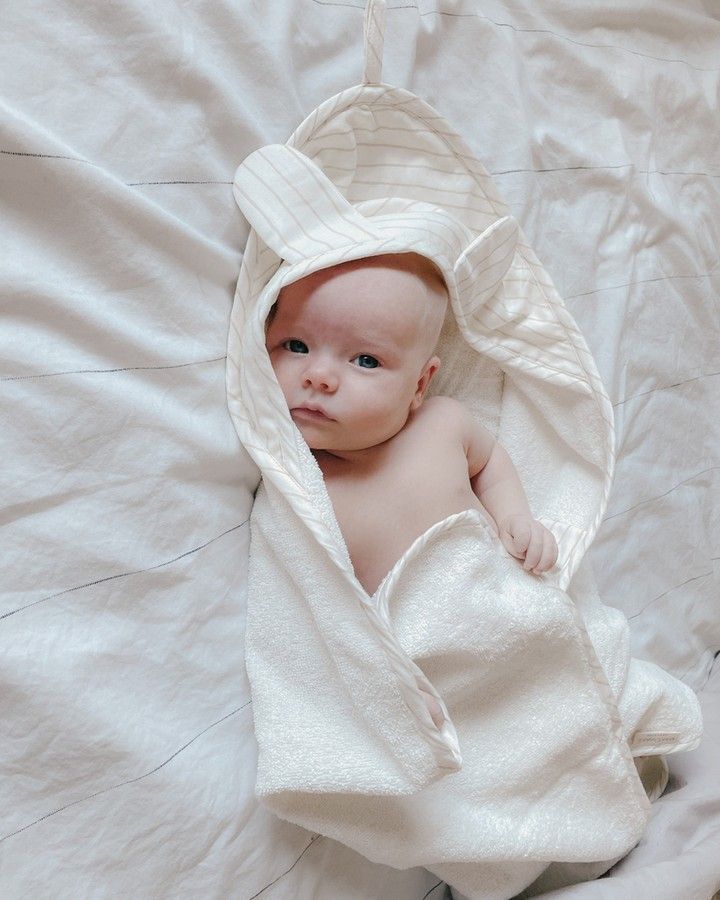As a new parent, one of your main priorities is sleep. But because the saying “sleep like a baby” isn’t always accurate, babies often need some help in this area. If this is the case for your baby, you may want to consider sleep training. In this article, we will offer you some tips for sleep training so that you and your little one can get the restful sleep you need.

What Is Sleep Training?
Sleep training is the process of teaching your baby how to fall asleep on their own...and stay asleep. If you’ve recently given birth, you know how important that is! With sleep training, you have several options for helping your little one learn this skill. Just try different methods to see what works best for your baby.
When Is Your Baby Ready For Sleep Training?
The best time to start sleep training your baby is when they drop their middle-of-the-night feedings or when they’re able to self-soothe, which is typically between four and six months.
How Long Does It Take To Sleep Train Your Baby?
Some parents have found success after one night of sleep training, while others only succeed after a month or more. Every baby is different. But experts say that, on average, it takes about three to seven days to achieve successful sleep training results.
The key to succeeding in a week is consistency. Your baby won’t learn to fall asleep and stay asleep on their own after only seven days if you do not keep trying night after night. That said, if you’ve been sleep training consistently for more than a week and your baby is still having trouble, reach out to your pediatrician to see if there’s an underlying issue that needs to be resolved.
Should Your Baby Sleep In A Different Room While Sleep Training?
Your baby doesn’t have to sleep in a different room when you’re sleep training. The AAP recommends that babies share a room with their parents until they’re six months old. What’s more important is that you separate from your baby, staying out of their sight. Putting your little one’s bassinet on the opposite side of the room where they can’t see you is helpful when sleep training breastfed babies.
There’s no right or wrong way to sleep train your baby. With the amount of information available today, you have a variety of options.
Cry-It-Out
With the cry-it-out technique, you’ll let your baby cry and self-soothe until they fall asleep — no matter how long it takes. Do not interfere while your baby is crying. The idea is that, eventually, your baby will stop crying, learn to fall asleep on their own, and sleep through the night.
No-Tears Method
This method is the opposite of the cry-it-out method. With this technique, you will gradually shift your baby’s sleep habits. For example, if your baby needs to be rocked before bedtime, rock less and less until you’re able to put them down without any rocking or crying.
Substitution
Another type of no-tears method involves substitution. If your baby falls asleep while nursing, for instance, try moving up the time of their last breastfeeding session and then reading a book right before lying them down for the night.
Camping Out
For this sleep training method, grab a blanket and pillow, mattress, or chair and lie or sit next to your baby’s crib. Gently pat or rub your little one until they fall asleep. After a couple of nights of this technique, simply sit or lie next to your baby without any prompts until they fall asleep on their own.
Sleep Lady Shuffle (Chair Method)
The sleep lady shuffle method is especially useful for children with separation anxiety.
As the name suggests, sit in a chair next to your baby’s crib. Every few minutes, move your chair back farther so your little one can still see you, but continue the process until you are no longer in sight. You can verbally soothe your baby, pat their back, or even pick them up with this method. This way, your baby still knows you’re around and can gradually become accustomed to the fact that you won’t be present all night.
Repeat each night until you’re able to lay your baby down and walk out of the room without tears.
Pick-Up-Put-Down Method
The goal of this method is to make your baby drowsy enough that they’ll fall asleep on their own. The procedure includes putting your baby down in their crib while they’re still awake (but sleepy) and coming back to check on them at gradual intervals.
When you come back to check on your baby, you can pick them up for a few minutes and comfort them. You may have to go in and out of your baby’s room several times, but eventually, your little one will fall asleep.
You know your baby best. There’s no one right method for sleep training. That’s the beauty of it. So feel free to create your own sleep training method!
Sleep Training Tips
Keep Your Baby Full During The Day
Sometimes your baby wakes up throughout the night because they’re hungry. Ensure that your little one is getting an adequate amount of food throughout the day so they don’t get hungry in the middle of the night.
Maintain A Consistent Bedtime Routine
You can start a bedtime routine for your baby as young as six weeks, and it’s never too late to start if your baby is older! A consistent bedtime routine includes a consistent bedtime. This means putting your baby to bed at the same time every night.
An example of a bedtime routine would be to bathe your baby, protect their skin with lotion, get them dressed for bed, read a story or sing a song, and then lay them down. These are just a few ideas. Whatever you do, stay consistent with the bedtime routine you’ve established for your baby, and keep it the same time every night. Your baby will catch on after a while and recognize when it’s time for bed.
Maintain A Consistent Daytime Routine
Just as you put your baby to bed at the same time every night, make sure you’re waking them up at the same time every morning. The predictability of their daytime schedule helps their nighttime schedule. When your baby wakes up in the morning, open the blinds and curtains and let the light in. At night, close them and create a darker environment for your baby. Sooner or later, your baby will catch on to their days and nights.
Create A Comfortable Environment
Your baby’s environment plays a huge role in their quality of sleep.
Be sure to keep your little one’s room temperature cool but not cold. If it’s too hot, your baby may get uncomfortable and sweaty, which could wake them up in the middle of the night.
Additionally, your baby may not be able to fall asleep or stay asleep because of sunlight creeping through the window. If this is the case, it’s an easy fix. Simply move the position of your baby’s crib or hang blackout curtains.
Finally, the type of mattress your little one sleeps on — including the firmness and breathability of the mattress — affects their quality of sleep. Choosing the right mattress can help make your baby’s environment more comfortable and, as a result, lead to better sleep.
Biloban’s Bassinet Mattress and Bassinet Mattress Pad reduces the risk of suffocation and helps regulate your baby’s body temperature throughout the night so they can sleep comfortably and soundly.
- Extra firm comfort for your baby!
- 1. Certified STANDARD 100 by OEKO-TEX®, meaning this product surpasses the highest criterion of testing for harmful chemicals and synthetics
- 2. Carefully designed to fit your bassinet perfectly
- 3. Made from premium high density foam, added air holes in the mattress ensure ultimate breathability
- 4. Features hypo-allergic zippered cover that’s removable and waterproof.
- 5. Easy care, the cover is machine washable.
Cite from: www.newtonbaby.com


